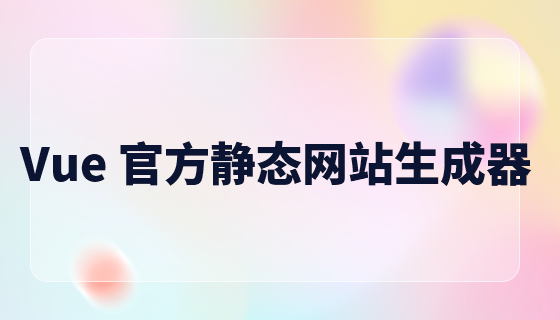如何通过 vue 和 element-plus 实现搜索和过滤功能
引言:
在现代的Web应用程序中,搜索和过滤功能是非常重要的一部分,可以帮助用户快速找到所需信息。Vue是一个流行的JavaScript框架,而Element-Plus是Vue的一个UI组件库,它们的结合使用可以轻松实现搜索和过滤功能。本文将介绍如何使用Vue和Element-Plus来实现这些功能,并提供相关的代码示例。
npm install vue npm install element-plus
vue create search-filter-app cd search-filter-app
然后,根据提示选择配置选项,或者直接使用默认配置生成Vue应用。
src/main.js文件,并添加以下代码:import { createApp } from 'vue'
import App from './App.vue'
import ElementPlus from 'element-plus'
createApp(App).use(ElementPlus).mount('#app')这里我们使用了ES6的模块导入语法,导入了createApp函数和需要使用的Element-Plus组件。然后我们使用createApp函数创建了一个Vue应用,并在应用中使用了Element-Plus。
src/components目录下创建两个文件SearchBar.vue和FilterBar.vue。在SearchBar.vue文件中添加以下代码:<template>
<div>
<el-input v-model="searchKeyword" placeholder="请输入搜索关键字"></el-input>
</div>
</template>
<script>
export default {
data() {
return {
searchKeyword: ''
}
},
watch: {
searchKeyword(newKeyword) {
this.$emit('search', newKeyword)
}
}
}
</script>在FilterBar.vue文件中添加以下代码:
立即学习“前端免费学习笔记(深入)”;
<template>
<div>
<el-select v-model="filterOption" placeholder="请选择过滤条件" @change="filterData">
<el-option label="选项1" value="option1"></el-option>
<el-option label="选项2" value="option2"></el-option>
<el-option label="选项3" value="option3"></el-option>
</el-select>
</div>
</template>
<script>
export default {
data() {
return {
filterOption: ''
}
},
methods: {
filterData() {
this.$emit('filter', this.filterOption)
}
}
}
</script>这里,我们分别创建了两个组件,并在组件中使用了Element-Plus的输入框和下拉选择框组件。注意,在SearchBar组件中我们使用了v-model指令来实现双向数据绑定,并在watch选项中监听searchKeyword的变化,并通过$emit方法将值传递给父组件。
src/App.vue文件,并添加以下代码:<template>
<div>
<SearchBar @search="handleSearch"></SearchBar>
<FilterBar @filter="handleFilter"></FilterBar>
<ul>
<li v-for="item in filteredData" v-bind:key="item.id">{{ item.name }}</li>
</ul>
</div>
</template>
<script>
import SearchBar from './components/SearchBar.vue'
import FilterBar from './components/FilterBar.vue'
export default {
components: {
SearchBar,
FilterBar
},
data() {
return {
data: [
{ id: 1, name: 'item1', option: 'option1' },
{ id: 2, name: 'item2', option: 'option2' },
{ id: 3, name: 'item3', option: 'option3' }
],
searchKeyword: '',
filterOption: ''
}
},
computed: {
filteredData() {
let result = this.data
if (this.searchKeyword) {
result = result.filter(item => item.name.toLowerCase().includes(this.searchKeyword.toLowerCase()))
}
if (this.filterOption) {
result = result.filter(item => item.option === this.filterOption)
}
return result
}
},
methods: {
handleSearch(keyword) {
this.searchKeyword = keyword
},
handleFilter(option) {
this.filterOption = option
}
}
}
</script>这里,我们在App组件中导入了SearchBar和FilterBar组件,并通过<SearchBar @search="handleSearch"></SearchBar>和<FilterBar @filter="handleFilter"></FilterBar>将事件绑定到App组件的方法上。在data中定义了一个数据数组,并根据搜索关键字和过滤条件进行过滤得到filteredData数组。然后使用v-for指令将filteredData数组中的每个元素渲染为列表项。
npm run serve
然后在浏览器中访问http://localhost:8080,你将看到一个带有搜索框和下拉选择框的页面。当你输入搜索关键字或选择过滤条件时,列表中的数据将根据输入进行搜索和过滤。
结论:
通过Vue和Element-Plus,我们可以轻松实现搜索和过滤功能。我们使用了Vue的数据绑定和Element-Plus的输入框和下拉选择框组件,通过事件和数据的传递,将搜索关键字和过滤条件应用到数据上,从而实现了搜索和过滤功能。以上是一个简单的示例,你可以根据自己的需求进行进一步的开发和定制。
以上就是如何通过vue和Element-plus实现搜索和过滤功能的详细内容,更多请关注php中文网其它相关文章!

每个人都需要一台速度更快、更稳定的 PC。随着时间的推移,垃圾文件、旧注册表数据和不必要的后台进程会占用资源并降低性能。幸运的是,许多工具可以让 Windows 保持平稳运行。




Copyright 2014-2025 https://www.php.cn/ All Rights Reserved | php.cn | 湘ICP备2023035733号